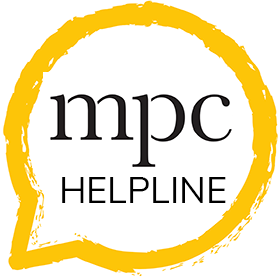What is stammering?
If you are an adult who stammers you may have heard the term stuttering as well as stammering and wondered what the difference is between the two. Stammering and stuttering mean exactly the same thing. We tend to talk about stammering in the UK while elsewhere it is called stuttering.
Overt features of stammering are those aspects of stammering that others might see or hear, while covert features of stammering are those that are experienced internally (i.e. thoughts, feelings, things that you do to cope with stammering).
Outward aspects
A person who stammers may:
- repeat whole words, e.g. “and, and, and, then I left”
- repeat single sounds or syllables, e.g. “p-p-project”
- prolong or stretch sounds, e.g. “sssssssometimes I go out”
- block, where the mouth is in position, but no sound comes out
- look as though they are tensing up or pushing hard. Often this can be seen around the eyes, nose, lips or neck but it can be seen anywhere in the body
- try to physically push the word out by making other movements. e.g. stamping a foot, shifting body position, nodding their head or jerking their head to one side, screwing up their eyes, tapping with a finger against something, clenching a fist or making other gestures with their hands
- do things because they are feeling self-conscious about stammering, e.g. looking down or away or covering their mouth
- breathe in an unusual way i.e. hold their breath while speaking, talk to the end of their breath and then take a gasp, or take an exaggerated breath before speaking
What may be less obvious

A person who stammers may, or may not:
- feel anxious, worried, frustrated, self-conscious, embarrassed, ashamed, angry or even guilty about stammering
- worry about how people will react if they stammer
- worry about what people will think of them if they stammer
- hold a belief that they are not good at talking, that it is not ok to stammer, or that there are things that they can not do because of stammering
- choose different words in order to avoid stammering
- find ways to avoid speaking or say as little as possible
- avoid some speaking situations i.e. by sending emails instead of making a phone call, by saying as little as possible in meetings or avoiding roles in work that would involve public speaking.
People who stammer can become so good at using these strategies that others may not realise they stammer or may think that they have a very mild stammer.
Find out more about stammering
Read more about stammering.

Sometimes you just need someone to talk to


Sometimes you just need someone to talk to
Our Helpline, 020 3316 8100, is open during office hours (9am-5pm) and voicemail messages can be left when the office is closed.
“It was really useful to properly open up about my stammer and how it effects me.”
Become a Friend
Receive emails with news and information about the Centre's work, events, and fundraising.
Sign up